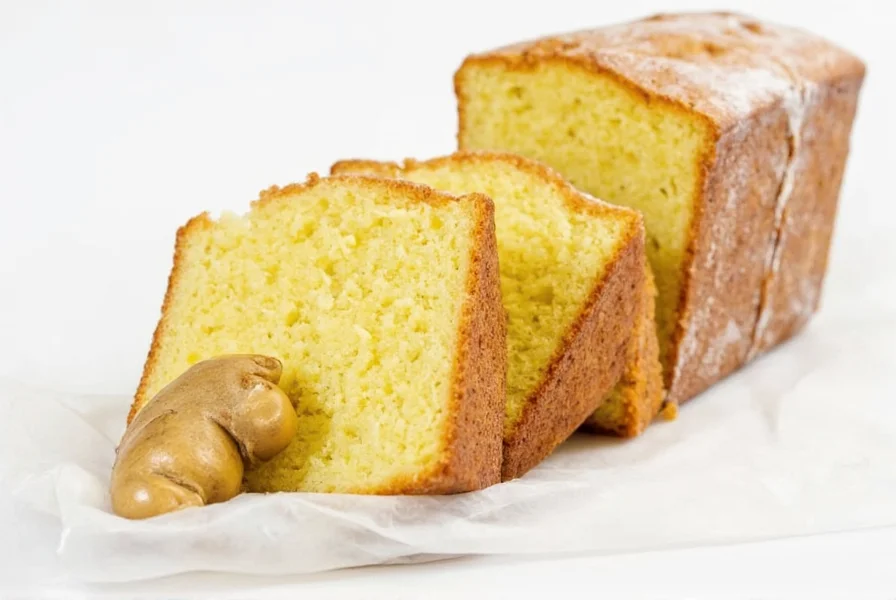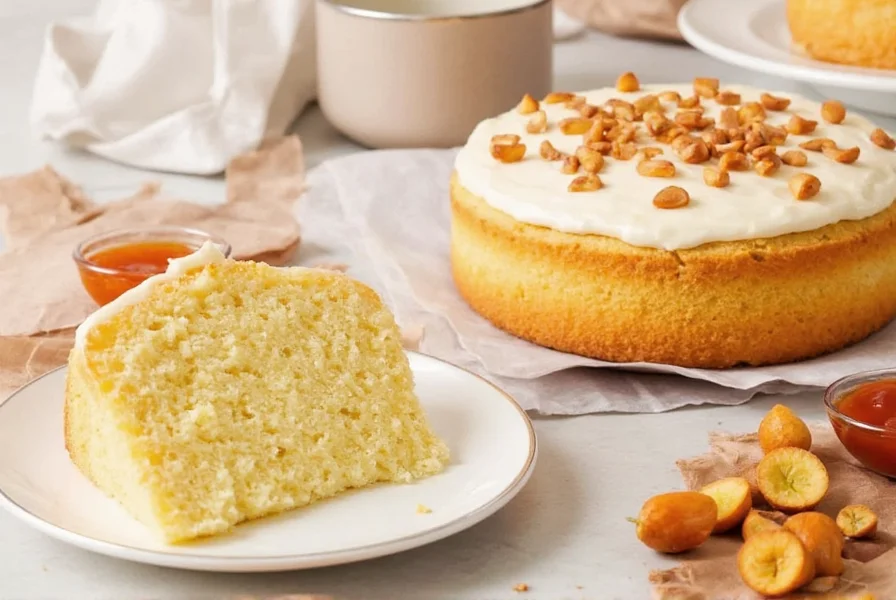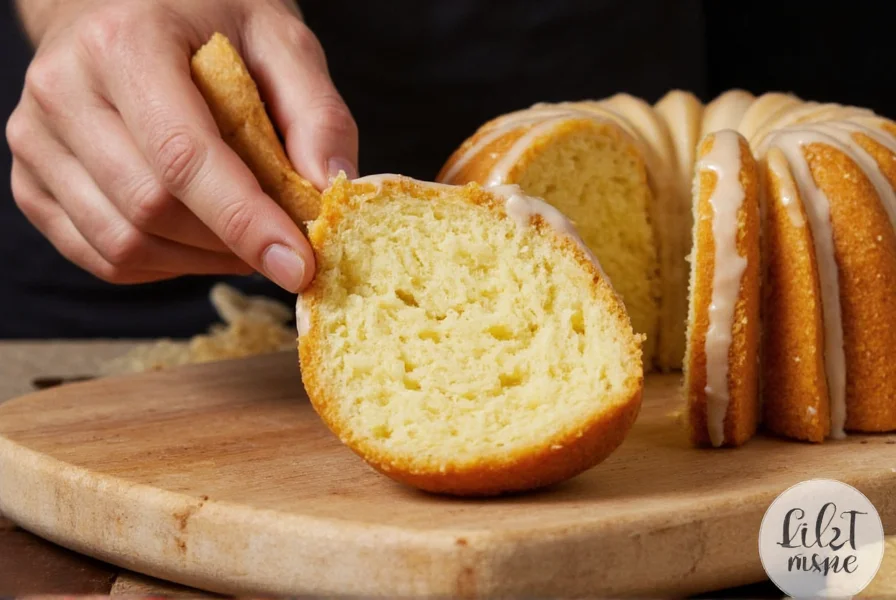Ginger's unique chemistry makes it exceptionally versatile in cake baking. The rhizome contains gingerol, a compound responsible for its signature spicy kick that transforms during baking into zingerone, which offers a mellower, sweeter flavor profile. This chemical evolution explains why ginger cakes develop richer complexity as they cool. Professional bakers note that ginger's acidity also reacts with baking soda, creating superior rise and tender crumb structure compared to many other spice cakes.
The Science Behind Ginger in Baking
Understanding ginger's behavior in cake recipes requires examining its three primary forms and how each interacts with other ingredients:
| Ginger Type | Best For | Conversion Ratio | Flavor Profile |
|---|---|---|---|
| Fresh Ginger | Moist cakes, glazes | 1 tbsp grated = 1/8 tsp ground | Bright, citrusy, sharp heat |
| Ground Ginger | Spice cakes, gingerbread | 1 tsp ground = 1 tbsp fresh | Warm, woody, mellow spice |
| Crystallized Ginger | Texture contrast, swirls | 1/4 cup chopped = 1 tbsp ground | Sweet heat with chewy texture |
Professional pastry chefs emphasize that fresh ginger's enzymatic activity breaks down gluten strands, resulting in more tender cakes. However, this same property means you shouldn't substitute fresh for ground ginger in equal amounts—doing so would create an overly spicy cake with compromised structure. The table above provides reliable conversion guidelines for successful substitutions.
Perfecting Your Ginger Cake Technique
Mastering ginger cakes requires attention to several critical factors beyond simple ingredient substitution. Temperature control proves particularly crucial—ginger's volatile compounds begin evaporating at 175°F (80°C), meaning prolonged high-heat baking diminishes its distinctive flavor. Experienced bakers recommend these evidence-based techniques:
- Layer ginger applications: Combine ground ginger in the dry ingredients with fresh ginger steeped in warm milk for the wet ingredients to create multidimensional flavor
- Acid balance: Pair ginger with buttermilk or lemon juice to enhance its bright notes while preventing bitterness
- Resting period: Allow ginger cake batter to rest for 30 minutes before baking, giving time for flavor compounds to distribute evenly
- Cooling protocol: Let cakes cool completely in the pan—ginger's moisture content continues to distribute during this period
One common issue home bakers encounter is ginger cake that's either too dry or unpleasantly spicy. Food scientists explain this typically stems from improper ginger-to-sugar ratios or baking at incorrect temperatures. Ginger's natural sugars caramelize quickly, so reducing oven temperature by 25°F (15°C) from standard cake recipes prevents burnt edges while ensuring thorough cooking.
Classic Ginger Cake Variations Worth Trying
While traditional gingerbread remains popular, contemporary bakers have developed sophisticated variations that showcase ginger's versatility. These evidence-based recipes demonstrate how subtle modifications create dramatically different results:
- Lemon-Ginger Polenta Cake: Combines fresh ginger with citrus zest and coarse polenta for unexpected texture contrast that professional food critics consistently praise for its balanced acidity
- Blackstrap Molasses Ginger Cake: Uses the robust flavor of blackstrap molasses to complement ground ginger's earthiness, creating a richer profile than standard gingerbread
- Asian-Inspired Ginger Matcha Cake: Pairs young ginger with ceremonial grade matcha for a sophisticated flavor profile that food historians note reflects ginger's historical use in both European and Asian culinary traditions
When developing your own ginger cake recipes, consider the principle of flavor layering. Culinary researchers have found that combining multiple ginger forms—such as ground ginger in the batter with crystallized ginger swirls and fresh ginger in the glaze—creates more complex flavor experiences than relying on a single form. This approach mirrors professional pastry techniques used in high-end restaurants.
Health Considerations of Ginger in Baking
Ginger's inclusion in cakes isn't merely for flavor—scientific studies confirm measurable health benefits when consumed in moderation. The active compounds in ginger, particularly gingerols and shogaols, demonstrate anti-inflammatory properties that remain partially intact even after baking. However, baking does reduce ginger's potency by approximately 30-40% according to food science research.
Nutrition experts caution that the health benefits of ginger in cakes must be considered alongside the overall recipe. A cake containing 2 tablespoons of fresh ginger provides meaningful ginger compounds, but when combined with high sugar content, the net health impact becomes neutral at best. For those seeking both flavor and health benefits, consider these evidence-based modifications:
- Replace 25% of sugar with unsweetened applesauce to maintain moisture while reducing refined sugars
- Use whole wheat pastry flour for added fiber without compromising texture
- Incorporate Greek yogurt to boost protein content and create a more balanced nutritional profile
Food historians note that ginger's medicinal properties have been recognized since ancient times, which explains its historical prevalence in "health cakes" across various cultures. Modern research continues to validate many traditional uses, though always within the context of moderate consumption as part of a balanced diet.
Perfect Pairings for Ginger Cake
Ginger's complex flavor profile interacts uniquely with complementary ingredients. Sensory analysis studies reveal that certain pairings significantly enhance ginger's desirable characteristics while muting any harsh notes. Consider these scientifically validated combinations:
- Citrus elements: Lemon or orange zest counteracts ginger's potential bitterness while enhancing its bright top notes
- Warm spices: Cinnamon and cardamom create synergistic flavor compounds that deepen ginger's natural warmth
- Creamy elements: Cream cheese or mascarpone frostings balance ginger's heat with cooling richness
- Bitter components: Dark chocolate or coffee notes create sophisticated contrast that food scientists describe as "flavor anchoring"
When developing your ginger cake recipes, remember that fat content significantly affects ginger's flavor release. Higher fat recipes (like those using butter or oil) allow ginger's volatile compounds to dissolve more completely, creating a more integrated flavor experience compared to low-fat formulations.

Troubleshooting Common Ginger Cake Issues
Even experienced bakers encounter challenges with ginger cakes. Understanding the science behind these issues leads to more effective solutions:
- Problem: Cake is too spicy
Solution: Reduce ground ginger by 25% and add 1/4 teaspoon baking soda to neutralize excess acidity. The baking soda reacts with ginger's compounds to mellow the heat without losing flavor complexity.
- Problem: Dry or crumbly texture
Solution: Increase liquid content by 2 tablespoons and reduce baking time by 5-7 minutes. Ginger's natural fibers absorb more moisture than standard cake ingredients.
- Problem: Flavor fades after baking
Solution: Steep fresh ginger in warm milk or cream for 30 minutes before incorporating into batter. This fat-soluble extraction method preserves more flavor compounds through the baking process.
Professional baking instructors emphasize that ginger cake quality improves significantly when allowed to rest for 24 hours before serving. During this period, moisture redistributes and flavor compounds continue to develop, resulting in noticeably more complex and balanced taste.

Conclusion
Ginger and cake represent a timeless pairing that continues to evolve with modern baking science. By understanding ginger's chemical properties, optimal usage techniques, and complementary flavor relationships, bakers can create exceptional cakes that showcase this versatile ingredient's full potential. Whether crafting traditional gingerbread or innovative contemporary variations, the key lies in respecting ginger's unique characteristics while thoughtfully balancing its distinctive heat with complementary elements. The most successful ginger cakes achieve harmony between spice and sweetness, moisture and structure, tradition and innovation—resulting in treats that satisfy both the palate and the soul.
Frequently Asked Questions
Can I substitute ground ginger for fresh ginger in cake recipes?
Yes, but with careful conversion. Use 1/8 teaspoon ground ginger for every tablespoon of fresh grated ginger. Remember that ground ginger provides deeper, warmer notes while fresh offers brighter, more citrusy heat. For best results, combine both forms—use ground in dry ingredients and fresh steeped in liquids.
Why does my ginger cake taste bitter?
Bitterness typically comes from overbaking or using too much ginger. Ginger's compounds break down into bitter elements when exposed to high heat for extended periods. Reduce oven temperature by 25°F and check for doneness 5-7 minutes earlier than recipe suggests. Adding 1/4 teaspoon baking soda can also neutralize excess acidity that contributes to bitterness.
How can I make my ginger cake more moist?
Ginger naturally absorbs moisture, so increase liquid content by 2 tablespoons. Substitute some fat with applesauce or yogurt, and always allow the cake to rest for 24 hours before serving. Professional bakers recommend brushing warm cake layers with simple syrup infused with fresh ginger for maximum moisture retention.
What are the best flavor pairings for ginger cake?
Citrus elements like lemon or orange zest enhance ginger's bright notes, while warm spices like cinnamon create depth. Cream cheese frosting provides ideal cooling contrast to ginger's heat, and dark chocolate offers sophisticated bitter contrast that food scientists call "flavor anchoring."
Does baking destroy ginger's health benefits?
Baking reduces but doesn't eliminate ginger's beneficial compounds. Food science research shows approximately 30-40% of ginger's active compounds remain after standard baking temperatures. To maximize retention, steep fresh ginger in warm (not boiling) liquids before incorporating into batter, as high heat degrades the beneficial compounds more quickly.











 浙公网安备
33010002000092号
浙公网安备
33010002000092号 浙B2-20120091-4
浙B2-20120091-4